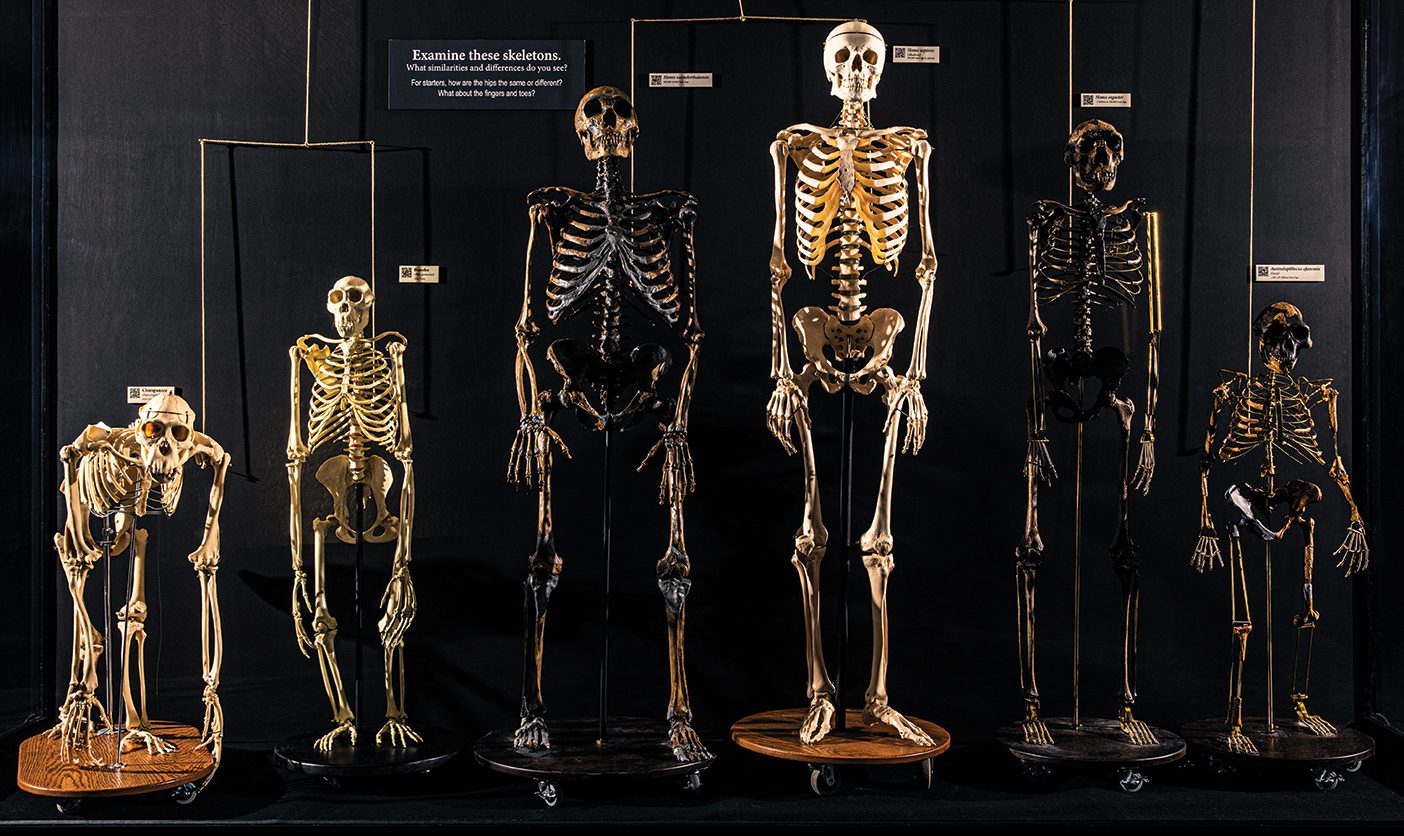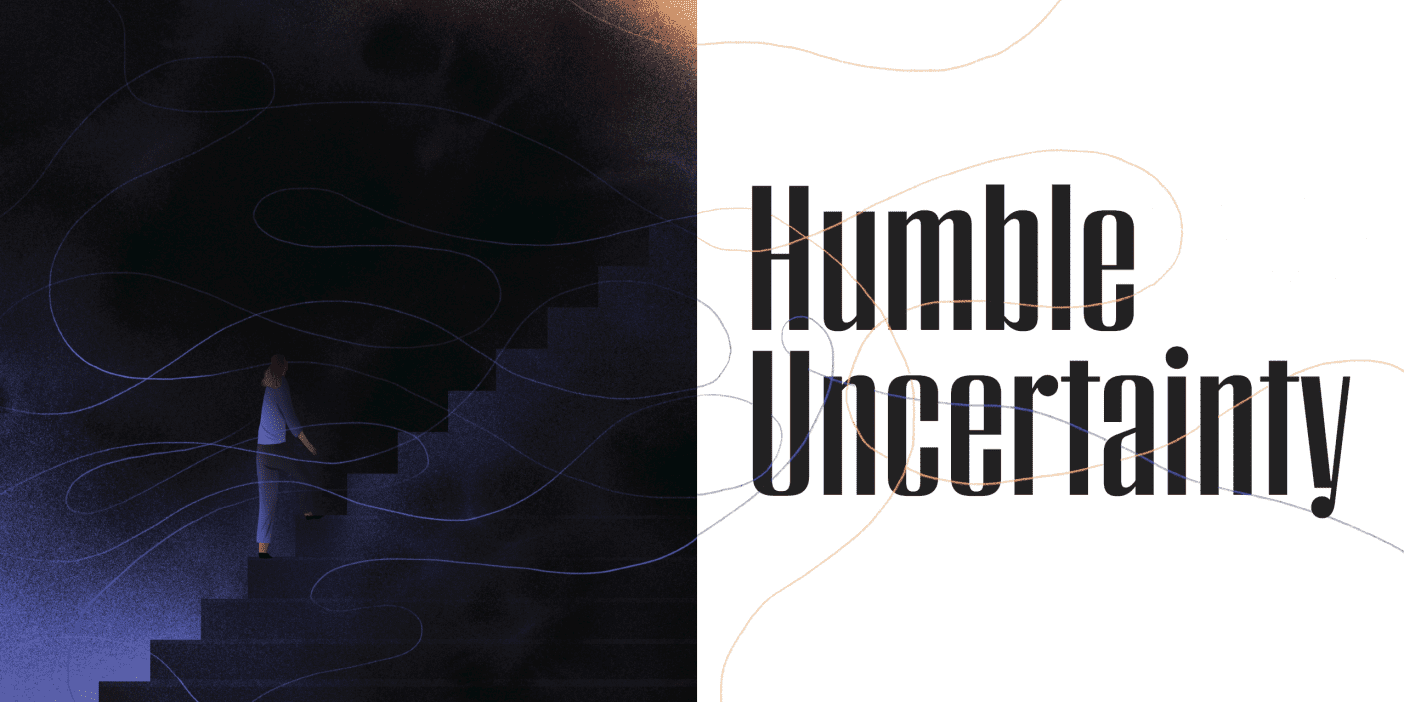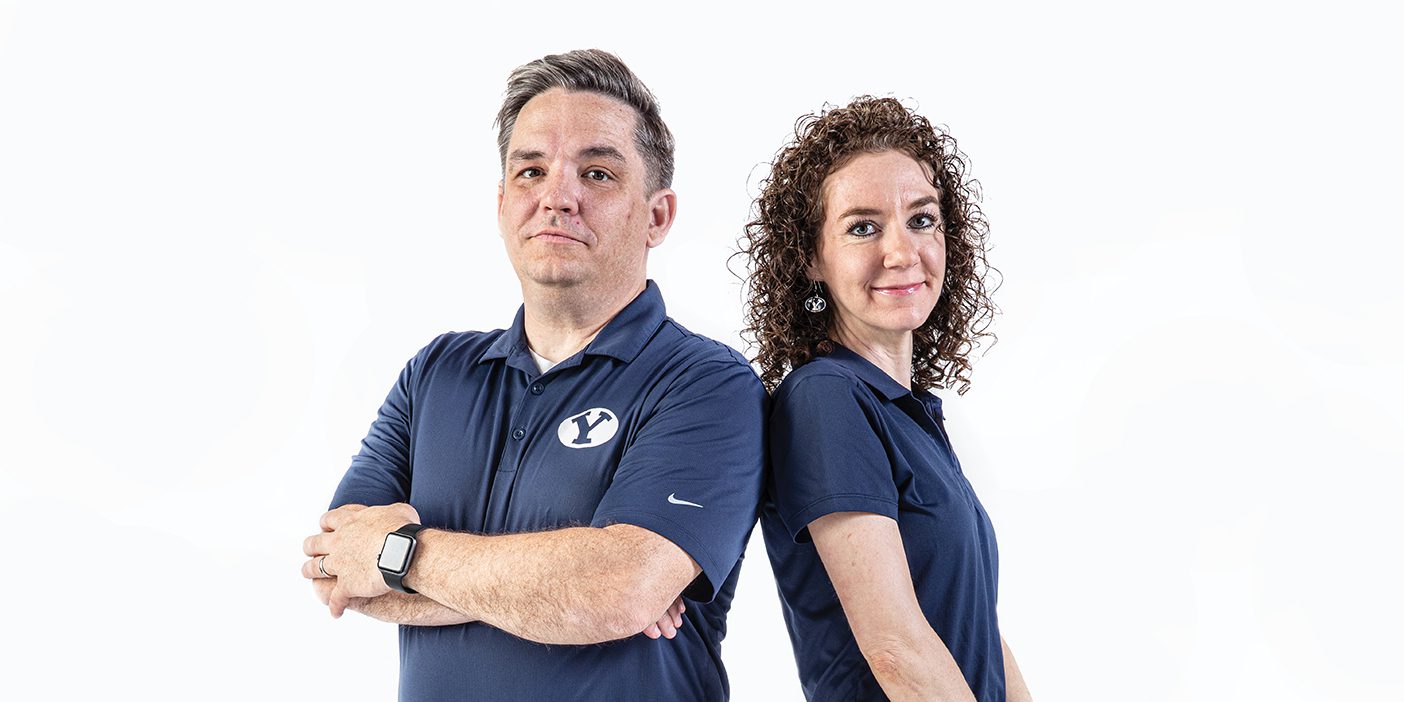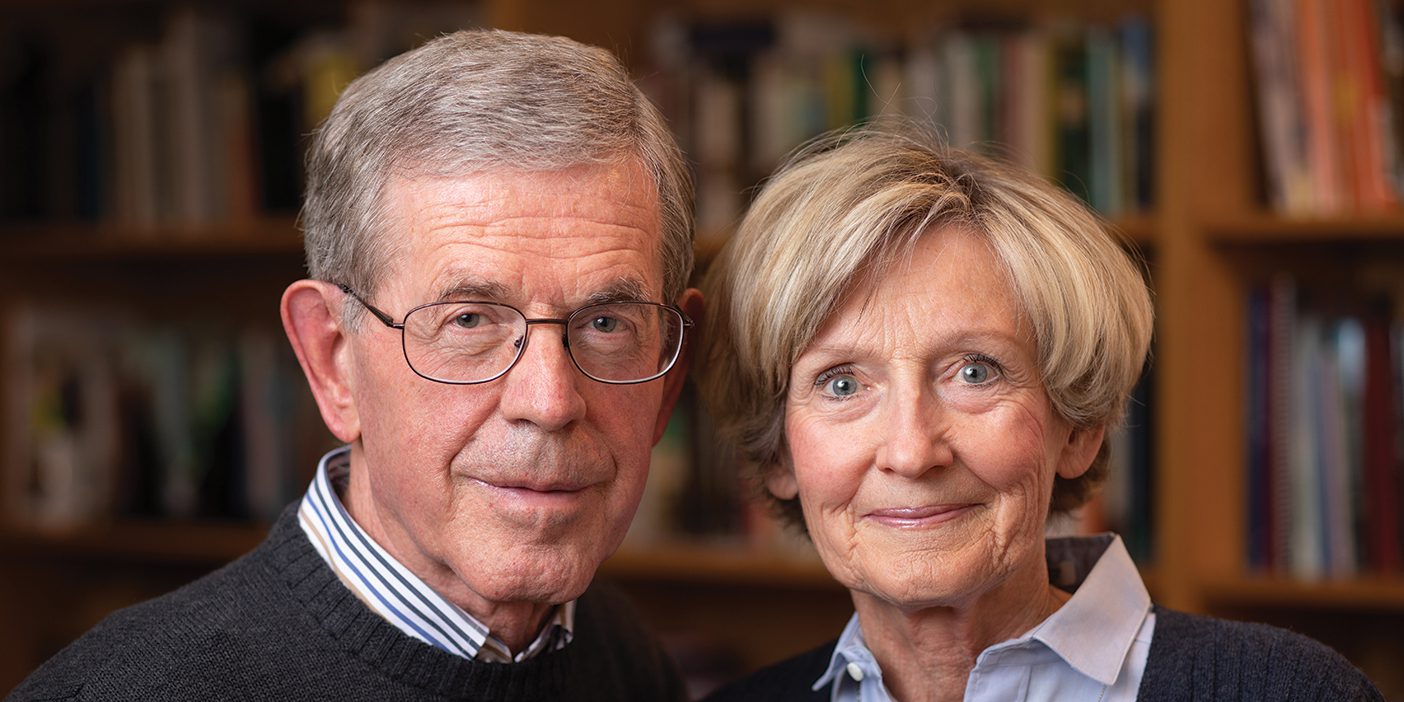
A tree is depicted in BYU’s Monte L. Bean Life Science Museum, but instead of leaves, this tree displays 25 different kinds of hominid skulls, including everything from Australopithecus afarensis to us—Homo sapiens.
The display is part of a new permanent exhibit, Understanding Evolution, and it raises questions. Do members of The Church of Jesus Christ of Latter-day Saints believe in evolution?
For Jamie L. Jensen (BS ’99, MS ’03), Seth M. Bybee (BS ’04), and other evolutionary biologists at BYU, evolution is simple: there is genetic change in populations over time. The world is full of evidence; flu shots change annually because the influenza virus evolves so quickly. That said, Jensen and Bybee understand that evolution is a theological issue too.
Evidence like the hundreds of hominid skulls that suggest humans share a common ancestor with apes often leaves students disconcerted. “They feel like it’s in conflict with their religion,” says Jensen. “So our main motivation is, let’s help save their testimonies.”
Historically, the matter has been explained in an either-or model; that is, either the science is correct or the religion is. But in a video for a Smithsonian Human Origins committee, Jensen says that science and religion answer two very separate sets of questions—both of which get at truth.
“If you’re talking about the origin of life on the planet, then science is answering questions such as mechanisms: How did it happen? When did it happen? How long ago?” says Jensen. “Whereas religion is more interested in answering questions of why did it happen? Why are we here? Who might have been involved? . . . If we respect the fact that these are two different ways of getting at the same truth, then they really don’t have to be in conflict.”
This reconciliation approach is put forth in every BYU Biology 100 class. Along with scientific data, the professors give students every official Church statement on evolution from the 1909 First Presidency essay to a 2016 statement in the New Era, which reads: “The Church has no official position on the theory of evolution. Organic evolution, or changes to species’ inherited traits over time, is a matter for scientific study.” A wide variety of opinions fit within Church doctrine—from denial of human evolution to full acceptance.
“I wonder if that’s how God actually did this.” —Seth Bybee
“We’re not out to indoctrinate students one way or another,” Jensen explains. “We’re out to help find ways that they can keep their faith and still be knowledgeable.”
BYU’s reconciliation model is opening minds. Jensen and Bybee coauthored a 2018 study published in the prestigious journal PLOS One, in which they examined BYU-student attitudes toward evolution from the ’80s to now. In the fall of 1988, 10 percent of polled students accepted evolution and believed it was in harmony with their religious beliefs. In 2016 that number jumped to 60 percent.
Both Bybee and Jensen have had spiritual experiences as they’ve sought to understand and explain evolution. “I’m literally praying over essentially understanding evolution better,” Bybee says. “But there’s also those moments where you see something, you discover something, and you’re kind of like, ‘Wow. That’s amazing. I wonder if that’s how God actually did this.’”












